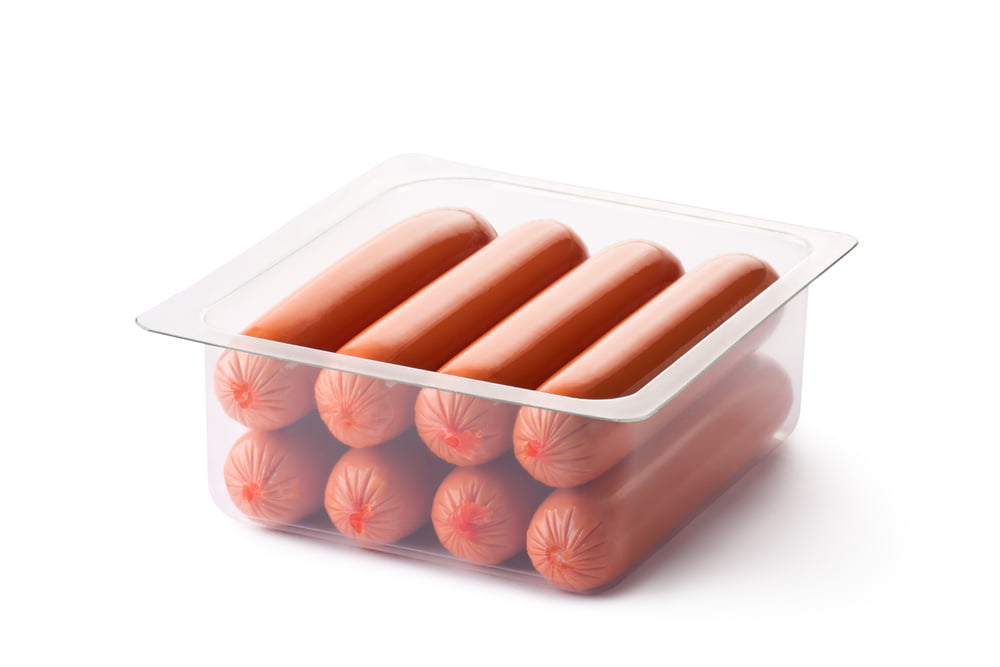

Editors Choice
Polythene Bags and Food Safety: Crucial Role in Food Packaging
Polythene bags are usually considered to be harmful to the environment since they are non-biodegradable, However, they can be made to be more eco-friendly through innovative manufacturing and recycling. We even mentioned how eco-friendly farmers are using polythene.
The trick is to produce polythene bags from biodegradable or compostable materials, such as plant-based polymers or bio-based plastics. Another way that they can be eco-friendly is by using recycled polythene derived from post-consumer waste that can significantly reduce the environmental impact. Encouraging responsible disposal practices, like recycling and proper waste management, ensures that polythene bags do not end up in landfills or oceans. This is actually going to be essential as more countries ban single use plastic.
Finally, designing polythene bags with a focus on durability and reusability can further enhance their eco-friendly attributes, encouraging consumers to adopt a more sustainable lifestyle by minimizing single-use plastic consumption. Ultimately, by incorporating these strategies, polythene bags can transition from being environmental hazards to contributing to a more sustainable and eco-friendly future.
But are eco-friendly polythene bags safe? Keep reading to learn more.
Eco-Friendly Polythene Bags Can Be Safe As Well As Sustainable
Have you ever wondered if the plastic bags you use to store or transport food are actually safe? Most of us simply grab whatever bags are handy without considering potential health implications. However, not all plastics are created equal when it comes to contact with our food.
By using the “wrong types” of plastic bags you allow chemicals to leach into your foods and drinks. As a result, this can negatively impact the flavor of your products and even increase health risks if you will consume them. That’s why polythene bags that are made food-grade materials can make a big difference. Food-grade polythene bags act as a barrier, that prevents contamination during storage and transport. They help to maintain food safety from processing facilities all the way to consumers’ homes.
In this article, you will find out what makes some plastic bags “food grade”, and understand the difference between food-grade and food-safe. We’ll also discuss why food grade poly bags are vital for both food businesses and consumers.
So whether you run a food company or just want to keep your own kitchen safe, read on to learn why food grade polythene bags matter.
Food Grade vs Food Safe Packaging: What is the difference?
You may have heard the terms “food-grade” and “food-safe” used interchangeably on plastic bags and food packaging. But it’s important to note these terms have distinctly different meanings.
Food-safe refers to materials that have been specially engineered to not transmit dangerous chemicals into food contents when used as intended. Food-grade contains food safe, but also includes materials that haven’t gone through safe tests, but in practice, they could be safe.
Essentially, every food-safe material can be considered food-grade. But not all food-grade materials have passed official safety tests to carry the food-safe badge.
Let’s explore a simple example:
Say you have two plastic food containers:
- One made from a plastic approved as food-safe.
- The other is from a plastic lacking this approval.
The food-safe container passed laboratory tests showing it doesn’t leach chemicals when holding tomatoes for a month. While the other plastic hasn’t gone through safety testing, it may still be fine for shorter tomato storage. So it would be considered food grade, but not certified as food safe.
The takeaway? When selecting plastic bags and food containers, look for clear food-safe certifications to ensure safety for your intended use case. Don’t assume food grade implies official food safety, as the testing and assurances can differ.
Why you Should be Using Food-Grade Packaging
Using properly formulated food-grade packaging is crucial for any business or consumer handling food. These specially designed materials maintain safety and quality in a number of key ways:
Maintains Food Safety & Quality
Food-grade plastics provide inert barriers between foods and external environments. This preserves nutritional content and avoids imparting off-flavors from chemical leaching. Proper food-grade packaging also locks out oxygen, bacteria, and moisture that degrade perishable goods.
Compliance with Regulations
Food producers and processors must comply with strict safety regulations when it comes to packaging and handling. Using certified food-grade materials is essential for meeting quality standards imposed by FDA rules. This packaging also enables compliance with related transportation and storage regulations.
Prevents Contamination
Food-grade plastics constructed from materials like polyethylene prevent chemical migration into food contents. This means avoiding hazardous substance contamination that can make consumers sick. Proper food-grade packaging also prevents physical contaminants like dirt and debris from entering goods.
By preserving quality, adhering to compliance rules, and stopping contamination; food grade packaging provides indispensable protection to perishable inventories. Using uncertified plastics puts in danger regulatory alignment, profits, and consumer safety. Let’s take a closer look at this problem
Consequences of Using Non-Food Grade Packaging
Food-grade plastic packaging may seem like an unnecessary cost, but the consequences of using non-compliant materials can be detrimental. Ranging from product waste to serious health implications, improper food storage methods affect both producers and consumers.
Chemical Leaching
Plastics not specifically formulated for food contact can leach harmful chemicals like plasticizers, stabilizers, and residual monomers into contents. Exposure to these migrating compounds alters flavors and textures while posing toxicity concerns if ingested.
Food Spoilage
Non-food grade packaging often lacks adequate moisture, gas, and UV barriers needed to preserve perishable goods. This accelerates spoilage from dehydration, oxidation, mold growth, and other degradation — translating directly to product waste and lost profits.
Health Hazards
Chemical leaching and accelerated spoilage also introduce food safety issues that breed bacteria like E. Coli, Salmonella, and Listeria. Contamination from these foodborne pathogens causes illnesses ranging from discomfort to hospitalization or death in consumers.
What Makes Packaging Food-Grade
Food-grade materials have four major attributes in common:
Chemically Inert Materials
Bags or containers must be produced from plastic resins that science proves will not interact with or dissolve into foods. This keeps the packaging intact while preventing the migration of any hazardous compounds into edibles. Polyethylene and polypropylene plastics have inert properties suitable for food-grade approval.
Specifically Designed and Tested for Food Contact
In addition to using stable, non-reactive plastics, food-grade packaging undergoes rigorous safety testing. This includes analyzing chemical migration and changes in food quality over time in FDA and EFSA approved labs. Multiple food simulants emulate contact with different categories of edibles from dry goods to high-fat dairy.
Proper Thickness to Prevent Leaks
Food packaging must maintain adequate thickness and durability to safely contain foods throughout handling and storage without risk of punctures, tears or leaks. Common standards mandate thicknesses between 1.5 to 6 mils depending on bag type and intended cargo.
Clear Labeling for Food Use
Valid food-grade packaging always features classification details and recycling codes directly on bags or containers. You should see identification marking the materials as FDA-approved for direct food contact. Symbols may also indicate microwave or freezer safety.
Checking that plastic packaging meets these key criteria verifies its legitimate status as food grade for safely handling edible contents. Never assume unmarked bags meet requirements without clear food grade designations.
Food Grade Plastics Used In Packaging
When checking that packaging meets food-grade standards, you’ll likely encounter these three plastic materials:
- Polyethylene (PE). Polyethylene denotes a family of plastic resins made from ethylene monomers. Two variants LDPE (low-density PE) and HDPE (high-density PE) offer flexibility or rigidity for different applications. These are affordable, food-grade plastics perfect for bags, films, bottles, and containers.
- Polypropylene (PP). Polypropylene is a highly versatile, food safe plastic made from propylene monomers. Its high-temperature resistance suits it for hot-fill liquids and microwaveable food ware. Polypropylene demonstrates excellent chemical inertia, making it ideal for food storage containers and yogurt cups.
- Nylon. Nylon refers to a variety of synthetic polymers known as polyamides. When molded into bags, wraps, and liners, nylon forms strong yet flexible food grade materials. Resistance to tears and punctures suits nylon uniquely for uses like oven bags for poultry and produce.
Checking for these food-grade plastics offers assurance you’re using only FDA-regulated, food-safe packaging for direct contact.
How and Where Food-Grade Bags Can Be Used
Now that you know how vital food-grade bags are for safety, let’s explore some of their most useful applications:
Storing and Transporting Food
Food-grade polyethylene bags enable reliable containment of all varieties of edibles from gravity-fed dry goods to chilled, freshly canned produce. Secure heat seals prevent spills or contamination in transit.
Freezing
Thicker food-grade bags withstand subzero temperatures without becoming brittle. Advanced barrier layers block moisture loss while preventing freezer burn. BPA-free bags approved for freezing even permit boil-in-bag cooking.
Cooking and Reheating
Speaking of boiling bags, some food-grade models allow cooking or microwaving contents directly inside. However, always confirm specifications first for oven and microwave safety up to intended temperature ranges.
Portion Control
Marked measurements in quarts or gallons on some bags assist with separating ingredients, meal preps or leftovers into planned portions. This encourages proper serving sizes and less waste.
Organization
Custom-sized bags help organize the fridge or pantry by food type. Labels keep track of contents for easy identification. Larger bags allow combining item sets to save space.
With this versatility, every home cook and food supplier should keep a variety of food-grade bags on hand to fulfil an array of storage needs..
Final Word
As consumers, we often take food packaging for granted without considering the immense impact proper materials make in keeping our families safe. But after highlighting the dangers of chemical leaching and accelerated food spoilage, the value of food-grade bags comes into focus.
While we can’t reverse issues like plastic waste overload or microplastics entering soils and waterways, we can start making smarter individual choices today. When you opt for legitimately labelled food-grade bags from reputable polythene suppliers, you cast a vote to phase out questionable players and low-grade products eroding public health.
The journey toward a transparent, sustainable and ethical food supply chain begins in our own kitchens. So whether you’re a home cook or run a food business, set the example by securing ingredients in bags designed to go the distance.


 Environment10 months ago
Environment10 months agoAre Polymer Banknotes: an Eco-Friendly Trend or a Groundswell?

 Environment12 months ago
Environment12 months agoEco-Friendly Home Improvements: Top 7 Upgrades for 2025

 Features9 months ago
Features9 months agoEco-Friendly Cryptocurrencies: Sustainable Investment Choices

 Features10 months ago
Features10 months agoEco-Friendly Crypto Traders Must Find the Right Exchange



























